Kraków 2021-11-22
Passenger carriages of the "Y" standard of the Polish production of the 111A family and derivatives.
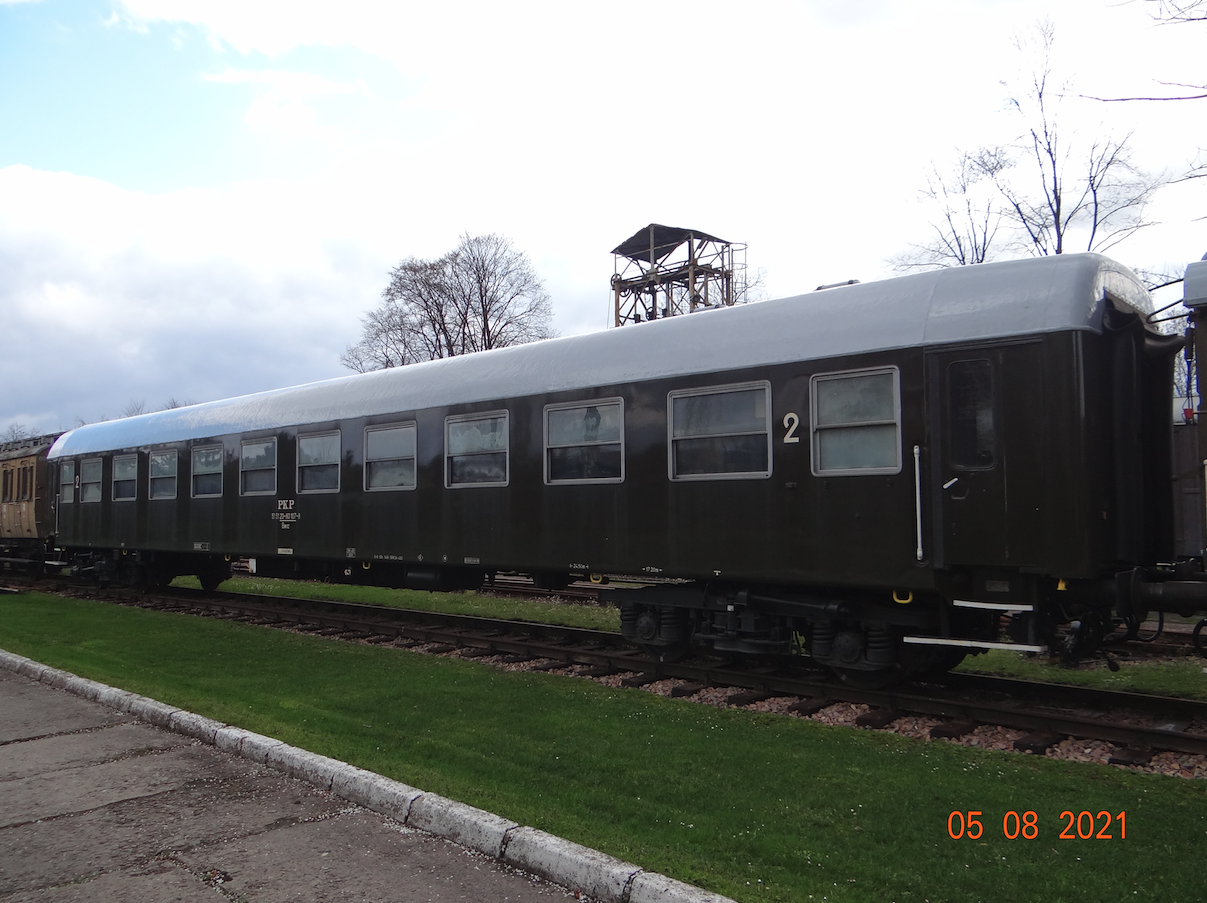
Description of the photo: Passenger car type 111A by HCP. Number 515120-80 107-8; 51 - fixed track gauge, non-air-conditioned, 51 - PKP, 20 - 2nd class passenger car, 80 - running speed 140 - 160 km / h, 107 - serial number, 8 - self-control digit. Marking Bwxz: B - 2nd Class, w - a car with a HV cable for high voltage, for electric heating, x - a car with steam heating, alternative heating, z - a car out of class.
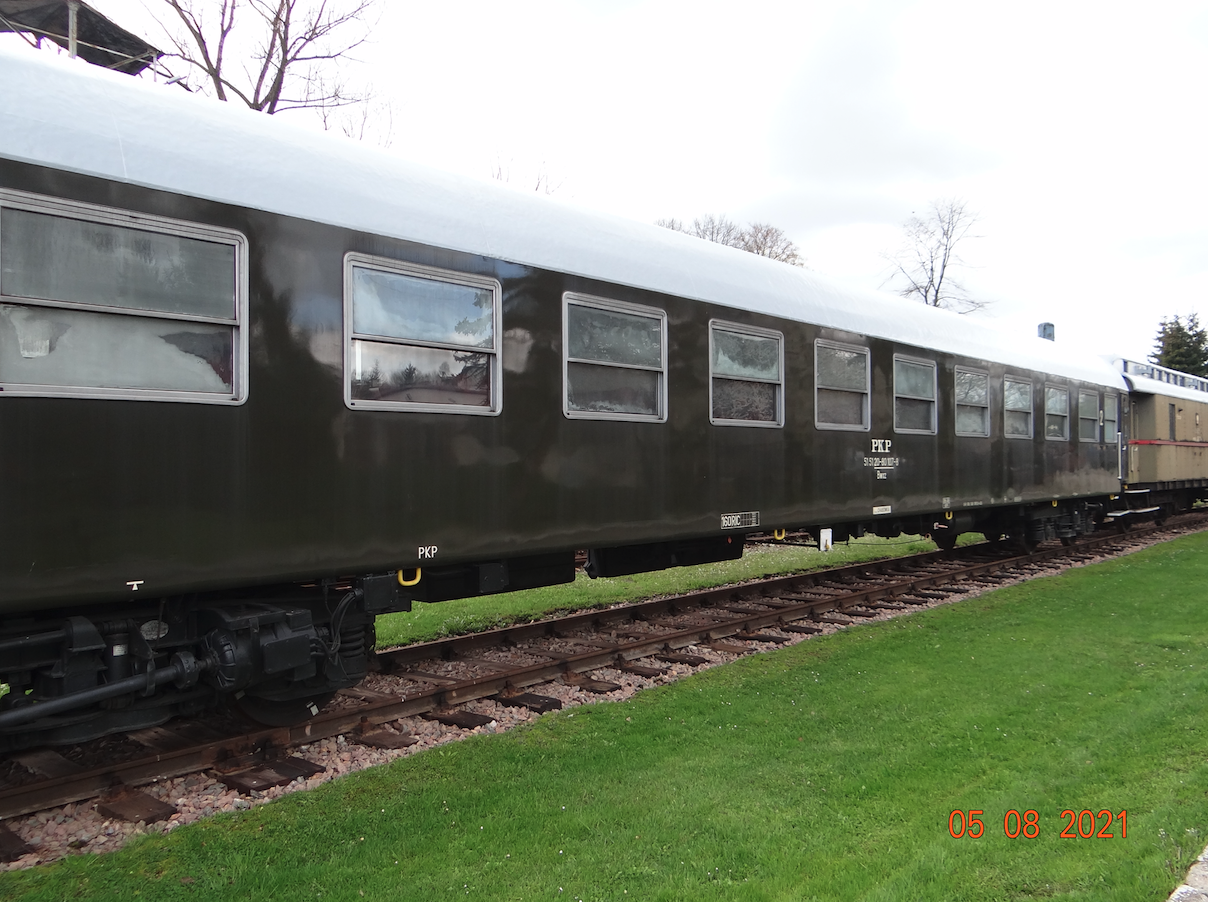
Already at the end of the nineteenth century, national railway authorities met with each other in order to unify the standards for passenger carriages in international traffic. As these meetings were based on a discussion forum, he interpreted each of the tips in his own way. The first problem that was solved positively was track gauge in Europe. On standard gauge lines it is 1,435 mm. At the beginning of the 20th century, the used wagons were from 20 m to even 27 m long, which inevitably determined a smaller or larger number of compartments. The Germans (West Germany) introduced wagons from 1951, which were later referred to as the "X" standard. Their characteristic feature was the overall length of 26.40 m and six-seater compartments both in the 1st and 2nd Class. The 2nd class car had 12 compartments, and the 1st class 10 compartments. During the same period, other national boards considered "X" standard wagons to be too comfortable and less economical. Therefore, the "Y" standard was developed, which in 1961 was also adopted as a standard. The "Y" standard was adopted in France and the countries of the Eastern Bloc.
The distinguishing feature of the "Y" standard carriages is the overall length of 24.50 m. 2-class carriages have 10 passenger compartments, each with 8 seats. The interior of the 1st Class carriages has 9 compartments, each with 6 seats.
The genesis of the type 111A carriages.
The prototype of the type 111A wagon is the type 104A wagon, developed in 1962 in Poznań. The 104A wagon was designed for a travel speed of up to 160 km / h. The prototype car was made in 1964 in the HCP factory. The wagons were serially produced until 1969. Eighty copies were built. The car was characterized by broken entrance doors. The double-leaf inter-car door was moved sideways by hand. In 1978, the production of type 104A wagons was resumed and another 100 were built.
The 104A series wagons and related wagons were designed as long-distance wagons, intended for domestic and international traffic.
In 1969, a revised 2nd Class passenger car was designed. It received the designation type 111A. In the literature, the manufacturer's mark HCP or PaFaWag is often added. The type 111A wagon, depending on the used bogies, is designed for speeds of 140 or 160 km / h. The wagons were produced (with breaks) from 1969 to 1992. In HCP, 2 Class type 111A passenger carriages were built in 1969-1971 and 1977-1978. They were produced at the PaFaWag plant in the period 1969-1992. Some sources say that production started as early as 1967. A total of 2,825 units were produced, which makes the Type 111A the longest series of wagons in Poland. Currently (2021), there are approximately 1,500 wagons in operation, and many of them have undergone numerous modifications.
Appearance.
From the outside, type 111A wagons are distinguished by the number of windows: 10 full-size and 2 smaller ones in the toilets / vestibules. The windows in the toilets have frosted glass. There are also windows in the front door. The roof can be grooved or smooth (PaFaWag). There may be a different number of ventilators on the roof of the car and their arrangement. The wagons differ in terms of boarding rails. The entrance to the car has three steps or two steps. The front door is broken, much more convenient to open than single-leaf doors, although the opening is still manual. The bottom of the box has a folded edge (PaFaWag) or a straight edge (HCP). Some types of wagons use bogies other than 4ANc.
The wagons were heated by steam and electricity. From 1973, the production of wagons (111Ac) with only electric heating was started. In the 80s, electric heating was already installed - supply air. In 1984, the production of wagons with alternative steam heating was completely abandoned. Steam heating was used when the train was in steam or diesel traction (SU45, SU46 locomotives).
All wagons in Poland were painted dark green. 1st Class carriages had an additional golden (yellow) stripe above the windows. The roofs were painted gray and the carriages black. In the central part of the wagon's side there is the inscription PKP, and underneath it, the digital wagon marking. Near the front door there was the number of the wagon class and possibly the information "Non-smoking wagon", "Smoking wagon".
Structure of the car 111A.
The car body is made of low-alloy carbon steel. The sidewalk, side walls, end walls and the roof are welded together to form a single self-supporting structure. The refuge is made of channel sections bent from sheet metal, 3 mm thick. The skeleton of the wagon is made of bent sections 2-3 mm thick. The cover of the box is made of 2 mm thick sheet metal. For the corrugated roof, 1 mm thick sheet metal was used. Thermal and acoustic insulation are installed in the skeleton. The anti-moisture and anti-corrosion insulation is made of asphalt paints with a coating thickness of about 1-2 mm. Additionally, polystyrene boards were used. The end walls of the car have rounded edges for a more streamlined shape.
Full-size windows are made of aluminum alloys, divided into two parts; the lower part is fixed, the upper part opens downwards. The windows have single panes, 5 mm thick. In the 1980s, some windows were installed unopened as a single pane. The windows in the vestibules and toilets are smaller with a hinged upper part. The panes in the toilets are frosted.
Pine or spruce beams were placed on the refuge, and on them impregnated plywood with a thickness of 15, 17 or 19 mm. There is a vinileum on the plywood. The floor in the toilets is made of polyester resin or epoxy resin reinforced with glass fiber. The partition walls are made of 8-10 mm thick waterproof plywood. Felt and polystyrene were used as soundproofing and insulation. Laminate and aluminum or plastic profiles are used as finishing.
The gangways have double-leaf doors that are manually moved to the sides. From the outside, the doors between the carriages are covered with rubber rollers. The carriages use a classic screw coupler and classic buffers equipped with springs. The buffer stroke is 11 cm. Each end of the car is equipped with two electric red lights, and additionally with hooks for end-of-train signals. In the end wall there are electrical connectors for high voltage, brake system and steam heating system.
Interior finishing.
The compartment car has soft sofas. There were four travelers on one couch. The sofas on the edges and in the middle had armrests. Fabric upholstery. Initially brown in color with patterns bearing the PKP logo. There are shelves for hand luggage and suitcases above the sofas. There are seat numbers above the seats. The windows are made of brown-beige fabric curtains with the PKP logo. The walls are lined with boards made of Unilam-type decorative hard laminate, in the color of wood. The door to the compartment can be moved to the side by hand. The corridor is lined with decorative laminate of the Unilam type. Folding seats between the windows. Wagon lighting with lamps equipped with fluorescent lamps. Hard linoleum (vinileum) 3-5 mm thick was laid on the floor. The vinyl is welded at the junction. The corridor is separated from the vestibules by swinging doors. Between the compartments and the corridor there are light walls made of waterproof plywood and 5 mm thick glass. The interior is dominated by aluminum alloys, in silver or gold color. The strips cover the joints of the laminate boards and protect the sharp edges.
Rolling carts.
4AN bogies were used in the carriages. A two-axle bogie and with a service weight of 39,500 kg, it worked well. Travel speed of up to 160 km / h was not a problem for him and the gear was smooth. Initially, an Oerlikon brake system was used. The brakes are block brakes. Safety brake levers were located in the corridor inside the wagons and in each of the compartments. Each car is also equipped with a manual screw brake, actuated from one of the vestibules by means of a wheel with a crank installed there. Over time, modernized 4ANc bogies were installed. The 4ANc bogies were installed in some carriages even until 1992. There are also 4ANh, 4ANg versions.

In 1979, the production of wagons (111Ak) began, which were equipped with the new GP200 bogies. These carts already have disc type brakes. The GP200 type bogie is designed for speeds of up to 160 km / h, while the GP200N type bogie is designed for speeds of 200 km / h. The abbreviation GP stood for Görlitz-Personenwagen, and the number 200 assumed its maximum speed capabilities, which was not so obvious in the first bogies. The construction of the GP200 trolley was created in cooperation with the Czechoslovakian wagon factories and the East German factory VEB Waggonbau Görlitz.
In 1983, the production of carriages (111Al) was started, equipped with bogies of the 11AN type. Trolleys type 11AN are Polish-made trolleys, designed for a speed of 200 km / h. The frame of this cart is open "H". The first stage springing consists of four sets of steel coil springs with a rubber damper. The springing of the second stage consists of two sets of steel "flexicoil" coil springs and metal-rubber shock absorbers. Disc brakes of the OBRPS design and Knorr-Bremse system. The prototypes of the strollers were built in 1982.
In 1985, the production of wagons (111Ar) with 4ANh-6 bogies was started. The 2-axle bogie is of Polish construction type 4ANh-6. The bogie has been used for the 111Ar carriages and is often confused with the GP200 bogies to which it is similar.
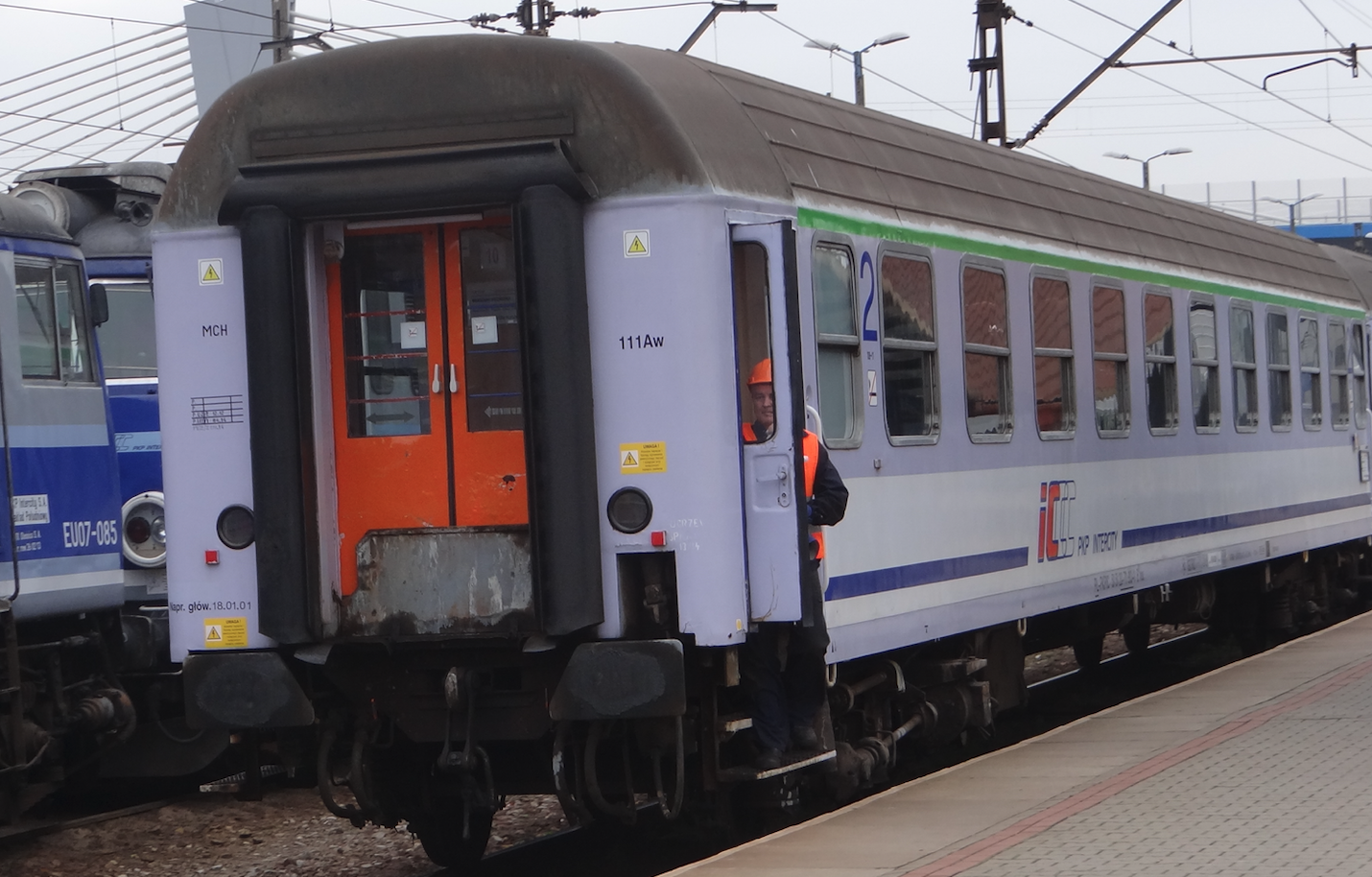
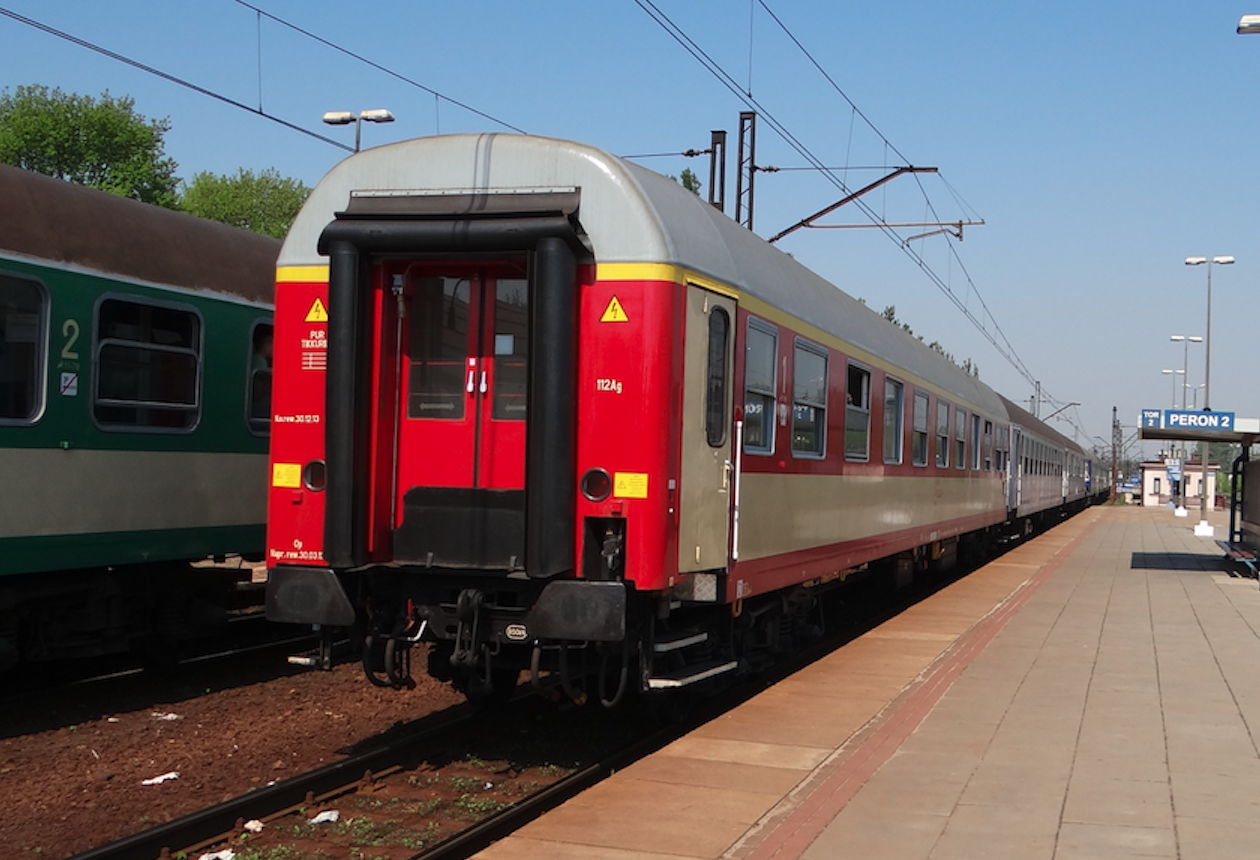
T-T Type 111A Specifications:
Length 24.50 m. Width 2.91 m. Height 4.06 m. Service weight 39 500 kg. Number of seats 80. The total number of passengers in the car is 170 people. Speed depending on the trolley used: 140 km / h, 160 km / h, 200 km / h.
Modernization of carriages type 111A and related cars.
Passenger car type 111A Lux - modernized carriages. In the period 1995 - 1997, PKP modernized about 20 carriages type 111A. The modernization was performed at FPS (Fabryka Pojazdów Szynowych in Poznań). These vehicles are equipped with silent wheelchairs with disc brakes, a ventilation heating and ventilation system, a closed toilet system and more comfortable six-seat compartments, also in the 2nd Class. The wagons were allocated to the Warsaw branch of the company.
Passenger car type 111A-2 - modernized carriages. Around 2000, the reconstruction of about 50 units began. In 2008, the wagons were transferred to InterCity. In the following years, the wagons received a toilet in a closed system.
Passenger car type 111Arow - cars rebuilt in NEWAG. By 2004, about 40 cars had been rebuilt. The car is compartmentless and has 66 seats. It has one toilet in a closed system. At the other end of the car there are hangers for bicycles and places for the disabled. The berth cars of the 110Ac type were also converted into type 111Arow wagons.
Passenger car type 111A-SPOT - carriages rebuilt from a car of the 1st Class type 112A, into a non-compartment car of the 2nd Class, with places for the disabled. 24 wagons were rebuilt. It was a very good decision that allowed us to use the surplus of 1st Class carriages.
Passenger car type 140A, 141A - modernized carriages. In 2012, passenger carriages 140A, 141A; Classes 1 and 2 have been modernized. In FPS, 20 cars were renovated for the needs of InterCity. In 2013, another 30 cars were renovated. There were 10 compartments in the carriages, but they were equipped with 6 individual seats. The wagons have air conditioning, fan heating, 230 V electric sockets, passenger information, toilets in a closed system. Displays with information for travelers are mounted on the rebound-sliding doors.
Passenger car type 161A - non-compartment carriages with 50 seats of 2nd Class, with separate places and a toilet adapted to the needs of the disabled and space for larger hand luggage, including bicycles and ski equipment. The reconstruction was carried out by PESA plants. 5 wagons were rebuilt.
Passenger car type 162A - non-compartment carriages with 78 seats, 2nd class. The reconstruction was carried out by PESA plants. 6 carriages were rebuilt.
Passenger car type 163A - non-compartment carriages with 67 seats of 1st and 2nd class. The reconstruction was carried out by PESA plants. 5 wagons were rebuilt. All these cars (161A, 162A, 163A) received new windows with tinted windows. The upper part of the windows is open. The front door was replaced with broken doors for sliding doors. The inter-car door is automatically actuated by a button (electro-pneumatic). The interior of the wagon is lined with polyester-glass laminate panels. The inner zones of the wagon are divided with glass walls. Rolling carriages and brakes were modernized. Trolleys after modernization are marked 4ANcS. The wagons have air conditioning, monitoring, information system for travelers with LCD monitors, fold-out tables for each passenger. 230V electric sockets are installed under the seats. There is wireless internet in the carriages. The existing toilets were replaced with modular closed-system cubicles.
Passenger car type 168A - non-compartment carriages, rebuilt in NEWAG for InterCity. In 2013, 10 wagons were rebuilt. The car is adapted for disabled people.
Passenger car type 111A-20 - cars rebuilt in ZNTK Mińsk Mazowiecki. By 2020, 125 cars were rebuilt for InterCity. The wagons have no compartments for 72 passengers. The wagon has air-conditioning, 230 V sockets, wireless internet, toilets in a closed system.
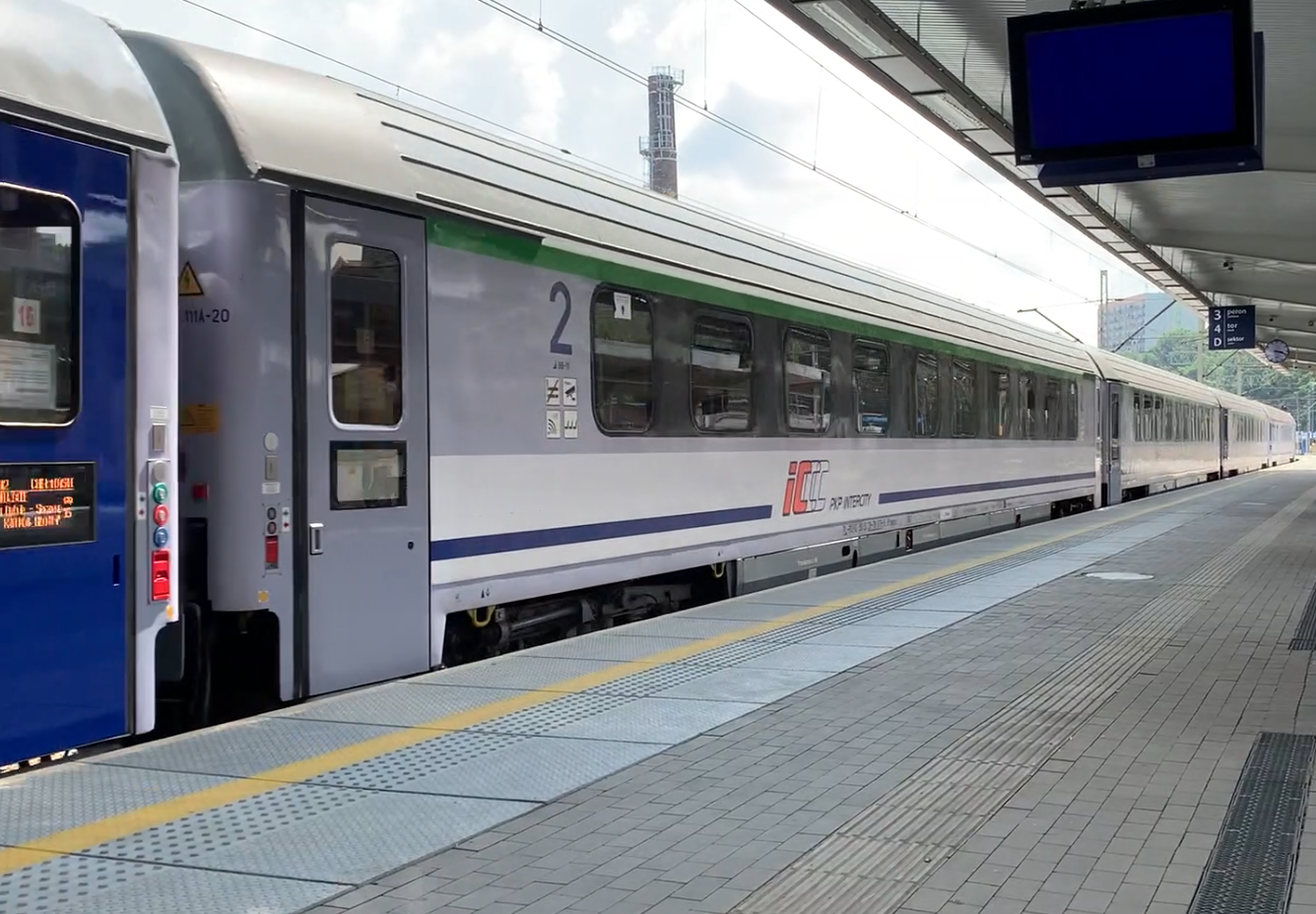
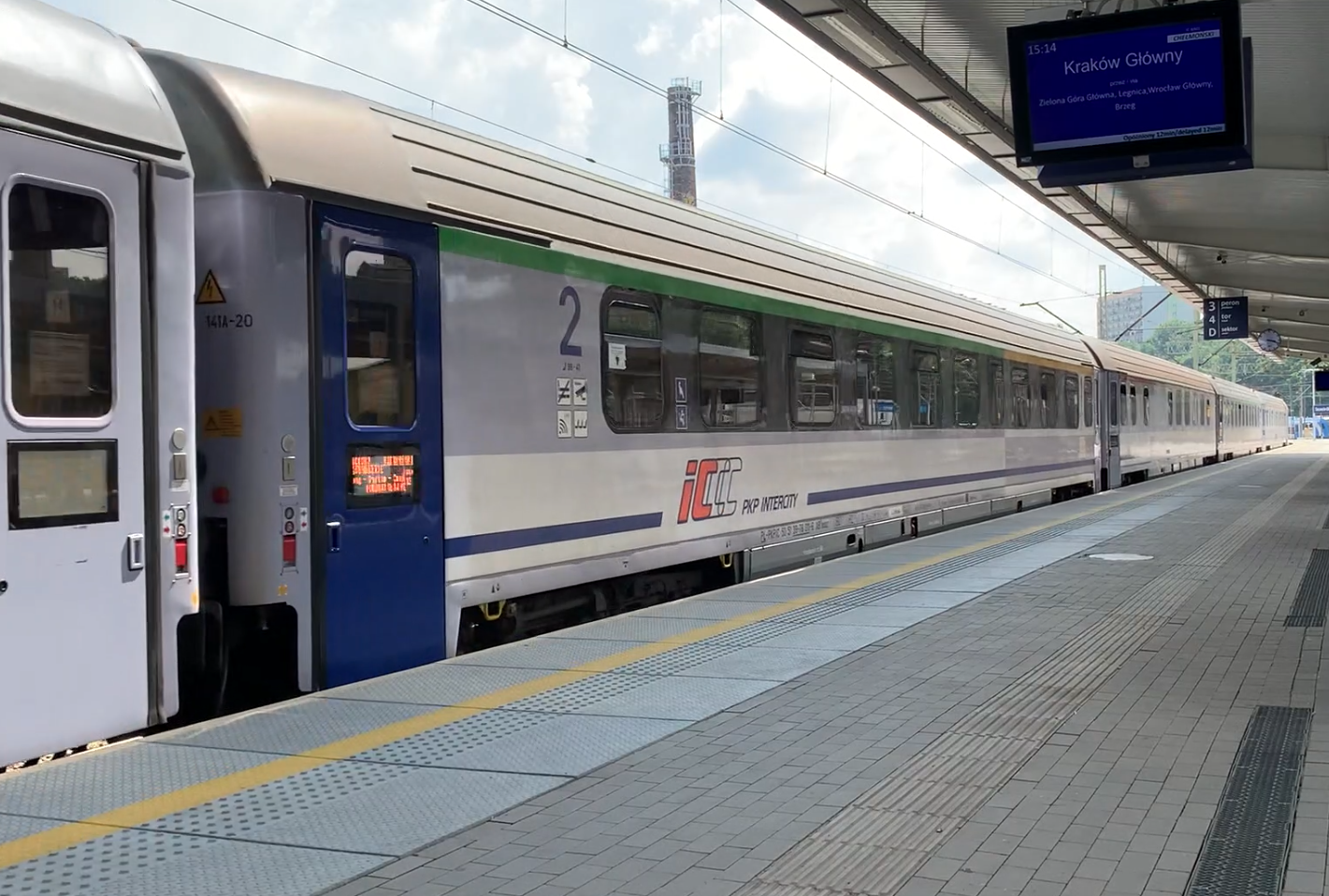
In the period 2017 - 2020, the FPS plant in Poznań modernized 90 cars of the "Y" standard for InterCity. The contract was PLN 410 million.
Passenger car type 111A-30 COMBO - cars rebuilt in PESA. In August 2020, InterCity ordered the modernization of 60 wagons to the level of type 111A-30 COMBO. These wagons are a new quality in travel. There are closed compartments for disabled people and families with children in the car. There are three such compartments. There is also a non-compartment space in the car for other passengers. By August 2021, 40 modernized carriages had been handed over. The remaining 20 units were delivered by spring 2022. Mainly 111A Lux and 112A Lux carriages were rebuilt.
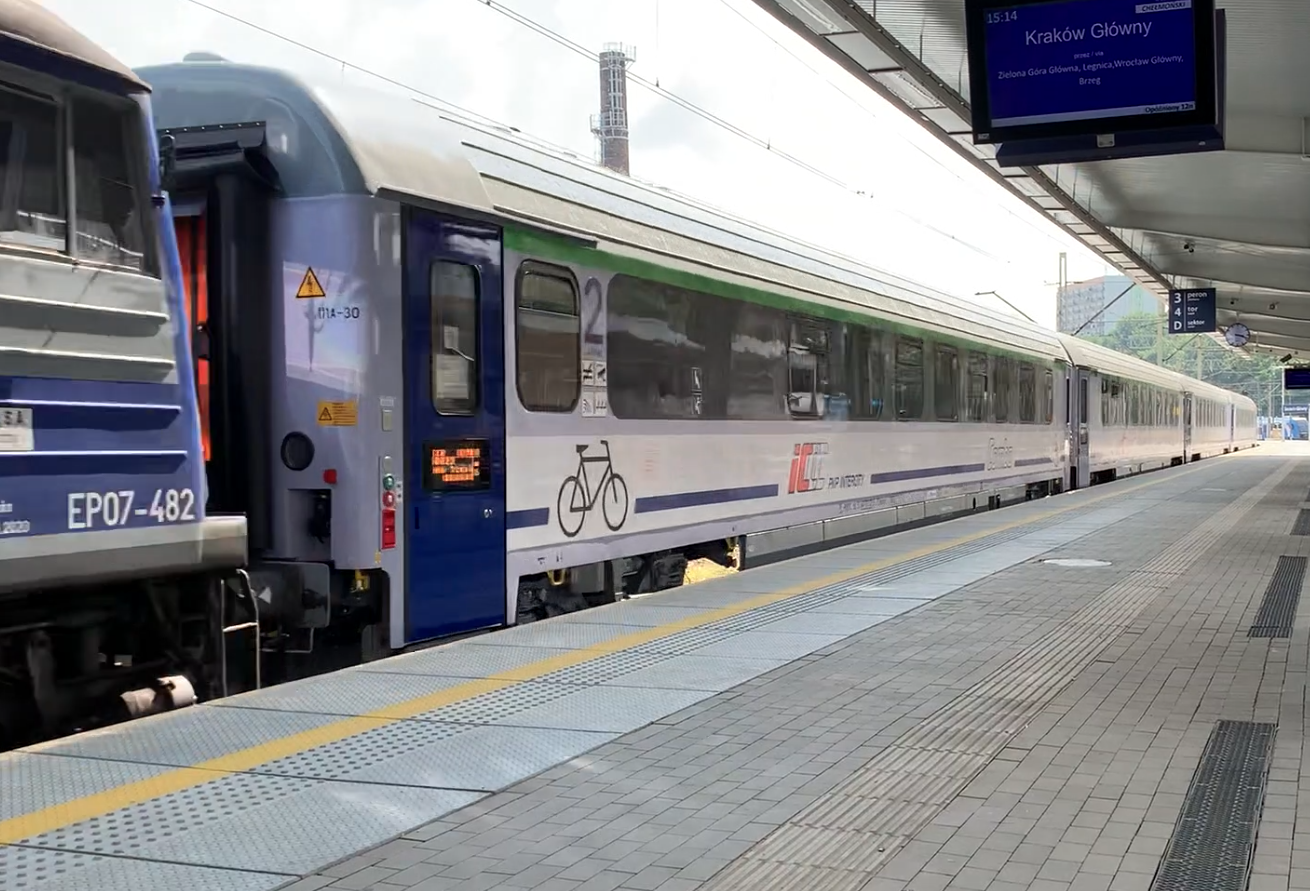
Written by Karol Placha Hetman
